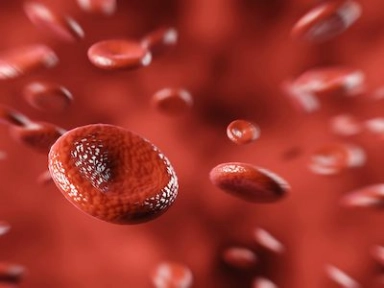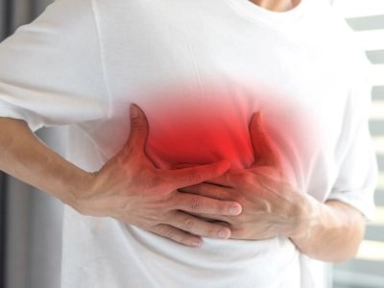{
event: "article_read",
name: `Evaluation Of Comparative Efficacy and Safety of Thromboprophylaxis Agents Among Critically Ill Patients`,
author: ``,
tags: `Thrombosis`,
publication_date: ``,
interaction_type: "content"
}
Evaluation Of Comparative Efficacy and Safety of Thromboprophylaxis Agents Among Critically Ill Patients
This systematic review and network meta-analysis revealed that the use of low-molecular-weight heparin (LMWH) may be more effective than unfractionated heparin (UFH) in reducing incidence of deep vein thrombosis (DVT) among critically ill patients.
Key Takeaway
- In critically ill adults, LMWH reduces incidence of DVT, whereas UFH and mechanical compressive devices may reduce the risk of DVT vs control treatment (a composite of no prophylaxis, placebo, or compression stockings only).
- LMWH is probably more effective than UFH in reducing incidence of DVT and should be considered the primary pharmacologic agent for thromboprophylaxis.
- The efficacy and safety of combination pharmacologic therapy and mechanical compressive devices was unclear.
Why This Matters
- Critically ill patients are at increased risk of venous thromboembolism (VTE), including DVT and pulmonary embolism (PE), thus they receive prophylaxis in the form of pharmacologic or mechanical therapy, or both.
- However, there is uncertainty regarding which agents or combination of agents are best in the prevention of VTE among critically ill patients, and substantial practice variation exists.
Study Design
- This systematic review and network meta-analysis of randomized clinical trials (RCTs) evaluated 6 databases (inception–January 2021) for RCTs of intensive care unit (ICU)-patients receiving pharmacologic, mechanical, or combination therapy (pharmacologic agents and mechanical devices) for thromboprophylaxis.
- Critical outcome of interest: Incidence of all lower-extremity DVT (either proximal or distal) at the longest follow-up, within 90 days of ICU admission
- Other key outcomes: Incidence of PE, incidence of any new VTE, major bleeding and incidence of heparin-induced thrombocytopenia (HIT)
- Primary analysis: Evaluation of comparative efficacy and safety of LMWH, UFH, mechanical compressive devices (sequential compression device [SCD] and intermittent pneumatic compression [iPC]), combination of pharmacologic and mechanical compressive devices, and control therapy (a composite of either no prophylaxis, placebo, or graduated compression stockings)
- Secondary analysis: A hierarchical modeling approach evaluated comparative efficacy of any pharmacologic therapy, mechanical compression devices, combination of both, and control treatment
- Grading of Recommendations Assessment, Development, and Evaluation (GRADE) approach was used to rate certainty of comparison-evidence.
Key Results
- A total of 4,084 citations were identified, of which 3,307 citations were screened, and finally 13 RCTs were included with 9,619 patients.
Incidence of DVT (data from 13 RCTS):
- LMWH reduced DVT vs UFH (odds ratio [OR] = 0.72 [95% credible interval {CrI}: 0.46–0.98]; moderate certainty) or control therapy (OR = 0.59 [95% [CrI]: 0.33–0.90]; high certainty).
- UFH (OR = 0.82 [95% CrI: 0.47–1.37]; low certainty) and compressive devices (iPC or SCD; OR = 0.85 [95% CrI: 0.50–1.50]) vs control may reduce DVT risk.
- Combination therapy showed unclear effect on DVT vs either therapy alone (very low certainty; data from one RCT [secondary analysis]).
Incidence of PE or any VTE (composite of DVT, PE, or both; data from 5 RCTs):
- LMWH may reduce the incidence of PE vs control (OR = 0.47 [95% CrI: 0.03–3.91]), but quality of evidence is low.
- Compared with control, the effect of UFH (OR = 0.70 [95% CrI: 0.05–7.95]; very low certainty) and iPC or SCD (OR = 0.20 [95% CrI: 0.01–2.87]; very low certainty) on PE is uncertain
- The effect of LMWH vs UFH on PE is uncertain (OR = 0.65 [95% CrI: 0.08–3.65; very low certainty]) on the basis of very low quality of evidence.
- LMWH (OR = 0.63 [95% CrI: 0.18–1.59]; low certainty) and UFH (OR = 0.79 [95% CrI: 0.22–2.28]; low certainty) vs control may reduce any VTE-incidence.
Major bleeding (data from 7 RCTs) and HIT (data from 3 RCTs):
- LMWH vs UFH had an uncertain effect on major bleeding (OR = 1.71 [95% confidence interval {CI}: 0.49–5.95]; very low certainty).
- LMWH vs UFH may result in a lower incidence of HIT (OR = 0.38 [95% CI: 0.15–0.98]; low certainty), although certainty is limited.
Limitations
- The study could not examine if drug dose influenced efficacy.
- Limited availability of RCTs involving various LMWH agents for comparison
- Studies examining therapeutic dose parenteral anticoagulation for DVT prevention in seriously ill patients with COVID-19 were not captured.
- Heterogeneity existed regarding trials included and DVT-screening period; study findings may not extend across all critically ill patients
- Conclusions were limited by serious imprecision in several effect estimates.
- Data for several secondary outcomes were insufficient for network meta-analysis.
- Fernando SM, Tran A, Cheng W, Sadeghirad B, Arabi YM, Cook DJ, et al. Venous thromboembolism prophylaxis in critically ill adults: A systematic review and network meta-analysis. Chest. 2021. S0012-3692(21)03688-6. doi: https://doi.org/10.1016/j.chest.2021.08.050. Epub ahead of print. PMID: 34419428.
Related articles
MAT-BH-2200864/V2/Nov2024




